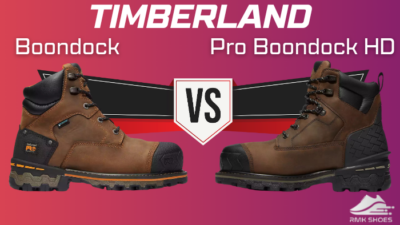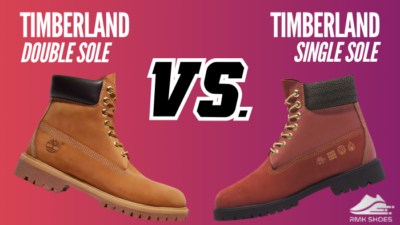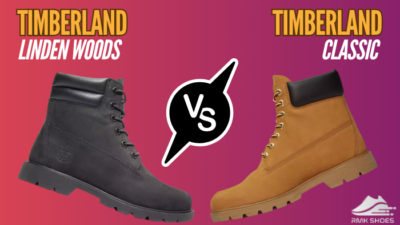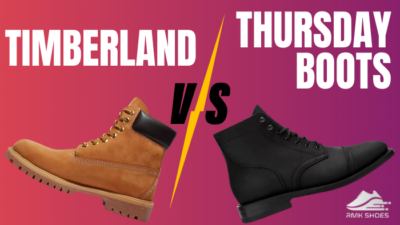For decades, Nike has been synonymous with innovation and performance in the running world, propelling countless athletes across the finish lines.
But choosing the right road running shoe is crucial. It could be the difference between smooth strides and sore feet.
So, buckle up, runners, because, in this article, I’ll dive into the head-to-head battle between two Nike titans: the versatile Pegasus 40 and the stability-focused Structure 25. I’ll dissect their cushioning, support, and fit to find your perfect shoe to conquer every mile.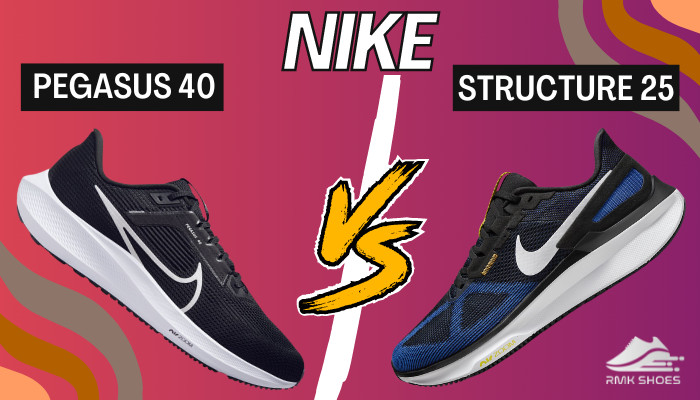
Let’s begin!
Overview of Nike Pegasus 40 and Nike Structure 25
The Pegasus 40 reigns supreme as a versatile daily trainer. Its Zoom Air unit pumps energy into your stride, making it a responsive shoe for easy and tempo runs. Its breathable mesh upper keeps you cool, while the flexible forefoot allows for a natural toe-off.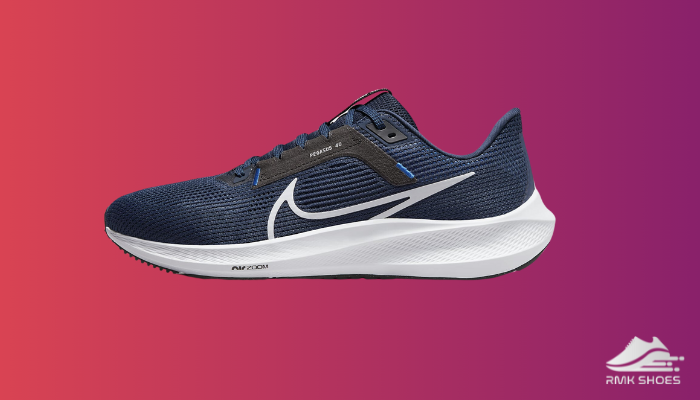
But if you crave extra support, the Structure 25 steps up.
This supportive shoe boasts a firmer, more stable platform built for runners with fallen arches. Its Cushlon 3.0 midsole cushions every stride while the medial post guides your foot through a smooth gait cycle.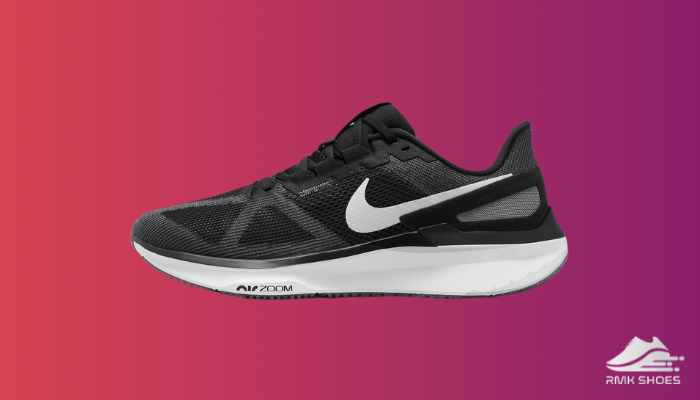
Now, stay tuned as I delve into the different features of each shoe, helping you choose the perfect Nike pair for your next run.
Characteristic Comparison Between Nike Structure 25 and Pegasus 40
To comprehend the distinctions between the Nike Pegasus 40 and the Structure 25, I will explore their upper design, midsole technologies, outsole features, fit, performance, and stability.
By understanding how each shoe addresses these aspects, you can align your choice with your running style and preferences.
| Feature | Nike Structure 25 | Nike Pegasus 40 |
|---|---|---|
| Type | Stability trainer, Road running | Neutral trainer, Road running |
| Weight | 10.8 oz (for men's size 9) | 9.4 oz (for men's size 9) |
| Stack Height | 37mm in the heel 27mm in the forefoot | 33mm in the heel 23mm in the forefoot |
| Heel-to-Toe Drop | 10mm | 10mm |
| Upper | Engineered mesh with supportive overlays | Engineered mesh with improved breathability and comfort |
| Midsole | Zoom Air unit in forefoot only | Zoom Air unit in forefoot and heel |
| Outsole | Rubber | Rubber |
| Cushioning | Cushlon 3.0 foam | React foam |
| Fit | True-to-Size | True-to-Size |
| Suitability | Overpronators, Runners seeking maximum cushioning and stability | Neutral runners, Versatile for various running styles and paces |
| Durability | High | Average |
| Price | Around $140 | Around $130 |
| Best for | Easy runs, Recovery runs, High mileage runners, Runners with fallen arches | Daily training, Tempo runs, Interval training, Wide range of paces and distances |
The table highlights the capability of both shoes as running and daily training sneakers. However, after thoroughly analyzing individual attributes, it becomes evident that one outperforms the other.
For a comprehensive insight into the superior shoe, go to the following section.
Fundamental Differences Between Nike Pegasus 40 and Nike Structure 25
When it comes to running sneakers, even the slightest differences can significantly impact your overall experience. I’ll dissect the fundamental variances in design, materials, and construction between Peg 40 and Structure 25.
From the upper’s breathability to the outsole’s traction, I’ll leave no stone unturned in helping you make an informed decision.
Below, I’ve highlighted the distinctions between the Pegasus 40 and Structure 25:
Upper Material and Breathability
The Pegasus 40 is a breezy, versatile jogger for your runs.
This running kick has a thin, light, single-layer, breathable mesh upper that’s like a breath of fresh air, even on scorching Mexican days. It keeps your feet cool and dry, even when things get steamy.
But there’s a catch. It can get a bit warm and sweaty itself.
The tongue and collar are nice and comfy, and the lacing system has a cool bar style that holds everything snug.
I’ll admit, it’s not the most flashy upper, but it’s a reliable workhorse that gets the job done in all kinds of weather, from snowy to warm treks.
On the other hand, the Nike Structure 25 is a cozy running shoe. It’s got a more traditional, padded upper that feels like a warm hug for your feet, perfect for those hot days.
The mesh is still breathable, but it’s not quite as well-ventilated as the Pegasus.
The tongue’s not attached to anything, so it might slide slightly, but it wasn’t a major issue for me. And the wide forefoot has provided wiggle room for my toes to spread out. It’s got some extra overlays in the front, but don’t worry, I didn’t get blisters.
Though, for me, the Pegasus edges out the Structure by a hair. Sure, it gets a bit warm sometimes, but the breathability and versatility win me over.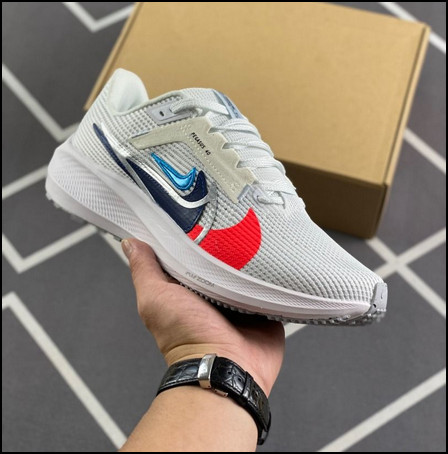
Midsole Technologies
The Pegasus 40 hits the ground with two Zoom Air units, giving you a ride that’s softer than a cloud but still bouncy. When you land, the Zoom Airbags hug your feet, then bounce back like they’ve got springs.
The React foam is firm at first, but trust me, it loosens up as you put in the miles.
I took these trainers for a 40-kilometer spin, and despite the initial firmness, my feet were still comfortable at the finish line.
So, the Pegasus might not have all the flashy tech, like rockered geometry or energy-returning midsole, but it provides an easy and stable ride.
Now, let’s talk about the Structure 25. The Cushlon 3.0 foam gives a firm ride, but the bounce factor is non-existent.
Unlike Pegasus, Structure has rocker geometry, but the forefoot is a bit stiff, making the rocker useless.
I tried a 42 km training run in these road shoes, but they felt heavy and sluggish.
Ultimately, the Pegasus 40 wins this round for me. Two Zoom Air units, React foam that mellows out, and a ride that feels familiar in the best way possible.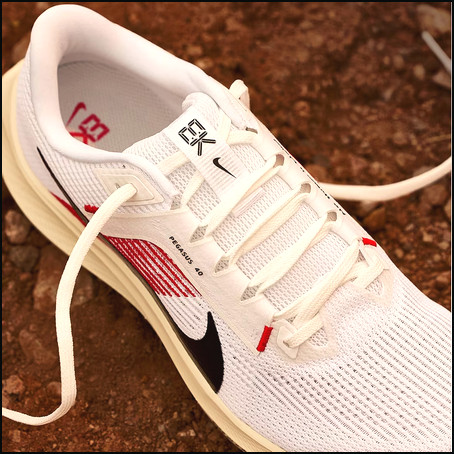
Outsole and Traction
The outsole is the unsung hero of the whole Nike Pegasus lineup.
The Peg 40 has a dense Duralon upfront, and the heel is rocking tough BRS 1000 – a duo with excellent durability. I’ve put these through the wringer, and they’ve come out on top, easily clocking over 600 miles without breaking a sweat.
The waffle grip on these running kicks is a game-changer. But they are not perfect.
The rugged rubber outsole can be slippery on rainy days and wet concrete. Also, the shoe feels loud on certain surfaces.
Let’s shift gears to the Nike Structure 25.
These running sneakers boast a full ground contact outsole with thick rubber material that’s like armor for your soles. No durability issues here.
The protruding lugs provide an enhanced grip. Also, unlike Pegasus, Structure 25 delivers exceptional traction on wet concrete.
Ultimately, choosing a winner is a tough call.
The Pegasus’s waffle grip is a marvel. On the other hand, Structure’s complete ground contact and rain-defying grip make it a solid contender.
But, if I had to pick, I’d lean towards Structure 25 for its consistent performance across the board.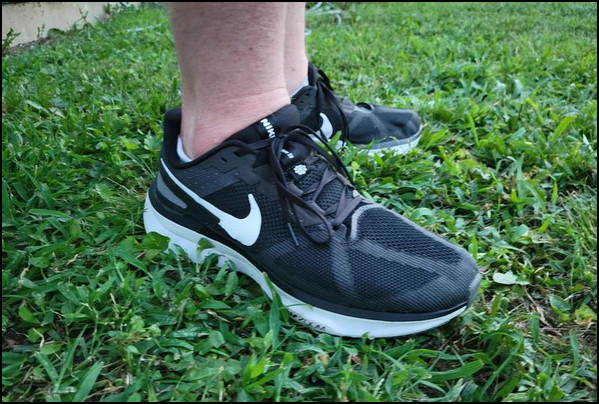
Comfort and Fit
Both the Pegasus 40 and Structure 25 fit true to size in my regular size 9, but their personalities diverge from there.
The Pegasus offers extra forefoot volume and a forgiving, wider fit, ideal for those who need wiggle room or high insteps. Its gusseted tongue and internal sock-like mesh hug the midfoot comfortably, while the slightly snug heel provides lockdown without needing a lace lock.
In contrast, Structure embraces a snugger, more traditional fit.
It has standard forefoot and midfoot volume but offers a lower heel cup and stiffer heel counter. This stability-focused design excels for overpronators who prefer a secure, locked-in feel.
However, the thicker, less flexible upper and scratchy inner liner are unsuitable for sensitive feet.
So, for wider feet, extra forefoot volume, and a sock-like fit, the Pegasus 40 wins. For stability, a snug midfoot, and a stiffer heel counter, the Structure 25 takes the crown.
Performance & Adaptability
The Pegasus 40 is a versatile workhorse, excelling in daily training and mileage. It easily handles easy paces, moderate efforts, and even uptempo running. The shoe’s cushioning is well-suited for longer efforts, making it ideal for neutral mechanics.
With excellent durability and traction, the Pegasus is a reliable option for various road surfaces, and its versatility even extends to mild trails and fire roads.
This jogger pairs seamlessly with super shoes or performance trainers for demanding efforts.
On the other hand, Structure 25 offers a unique performance profile characterized by a mild bounce and snappy feel, encouraging a faster pace.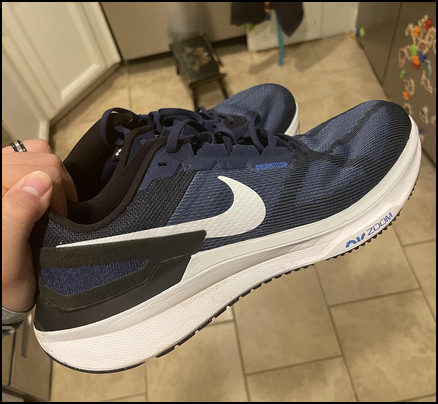
Despite its noticeable weight, I’ve found that my body adapts, allowing for a consistent and comfortable stride. The shoe’s durability is particularly noteworthy as I haven’t observed any wear after 50 miles, thanks to the robust outsole and intact lugs suitable for various terrains.
The Structure 25 accumulates mileage, excelling in easy daily runs with its firm and traditional drop design providing stability.
So, the Pegasus emerges as the more versatile option, adept at handling various paces, terrains, and training types. In contrast, the Structure offers a snappier feel and remarkable durability.
But its focus on easy and daily runs may limit its versatility for those seeking a shoe that seamlessly transitions from daily training to more demanding efforts.
Therefore, I’d consider the Nike Pegasus 40 the winner for its all-encompassing performance and adaptability.
Stability Features
The Peg 40, labeled a neutral shoe, lacks traditional stability features. Its narrow sole, particularly in the midfoot, coupled with mild sidewalls, does not offer the stability required for longer distances.
Despite fatigue, its firm sole resists collapsing, providing a secure platform. While the outsole grooves offer subtle guidance, I’d not consider it a stable shoe overall.
On the other hand, the Nike Structure 25 is explicitly designed for stability.
With a firmer ride, heel clip, and large midfoot sidewall, it provides a stable ride without being overly intrusive. The rearfoot stiffness and guidance center the heel, maintaining a stable and centered ride.
Positioned as Nike’s supportive stability training shoe, it falls into light stability or stable neutral.
It offers gentle guidance without compromising comfort, boasting traditional construction with good heel security and a solid platform.
The traction on the outsole contributes to stability on runnable trails off-road. It strikes a balance with a normal width underfoot, making it only slightly more stable than a neutral training shoe.
So, in this stability face-off, Structure 25 emerges as the winner for those seeking a stable and supportive ride.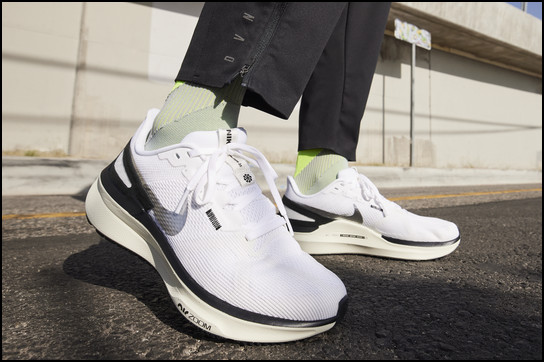
Benefits and Drawbacks of Nike Pegasus 40 and Structure 25
Every runner has unique needs and priorities, and what may be a benefit for one could be a drawback for another.
In this section, we’ll break down the pros and cons of each model. From breathability and versatility to stability and traction, understanding the strengths and weaknesses of the Nike Pegasus and Structure will assist you in choosing the shoe that aligns with your requirements.
Let’s explore the advantages and disadvantages of Pegasus 40 and Structure 25.
Nike Pegasus 40
- »Better breathability.
- »More versatile.
- »Softer and more bouncy sole.
- »Less weighty.
- »Secure fit.
- »Wider toe box.
- »More flexible upper.
- »Rockered geometry is not available in the midsole.
- »Less grippy outsole.
- »No additional stability features.
Nike Structure 25
- »Rockered geometry is present.
- »Better traction on wet surfaces.
- »Snug fit.
- »Better choice for overpronators.
- »High durability.
- »Designed for stability.
- »The non-gusseted tongue may slide.
- »Heavier and sluggish.
Verdict
In the clash between the Nike Pegasus 40 and Structure 25, it’s clear that both shoes bring unique strengths to the table.
The Pegasus 40 emerges as a versatile workhorse, excelling in breathability, overall comfort, and adaptability across various terrains and paces. Its softer and more responsive sole, coupled with a wider toe box, makes it an ideal choice for an all-encompassing running experience.
On the other hand, the Nike Structure 25 caters to runners who prioritize stability and support. With its rockered geometry, better traction on wet surfaces, and a snug fit, it’s a standout option for those with overpronation tendencies.
This model excels in providing a stable and centered ride, making it a reliable choice for runners seeking a supportive experience, especially during longer distances.
Ultimately, the choice between the Pegasus 40 and Structure 25 depends on individual preferences and specific running needs.
If breathability, versatility, and a softer ride are your priorities, the Peg 40 is the clear winner.
On the contrary, if you want top-notch stability and support, Structure 25 stands out as the preferred option.
Whichever path you choose, both these Nike shoes showcase the brand’s commitment to innovation and performance as running footwear.
FAQs
What type of shoe is Nike’s structure?
Nike’s Structure series is a line of running shoes designed to provide stability and support for overpronators, individuals whose feet tend to roll inward excessively during the running gait. The key feature of the Structure shoes is the inclusion of medial support technologies.
Why is the Nike Pegasus so popular?
The Nike Pegasus reigns supreme thanks to its versatility. It’s comfortable for daily training, supportive for all foot strikes, and durable for high mileage, making it a reliable workhorse for beginners and seasoned runners alike.
What’s the difference between Pegasus 39 and 40?
The Pegasus 40 boasts a softer, more accommodating upper for improved comfort but ditches the springy ride of the 39 for a slightly heavier, more stable one. Both offer excellent grip and similar design, making the 40 ideal for those seeking plushness, while the 39 remains a lighter, bouncier option for budget-conscious runners.
Is Nike Pegasus 40 good for casual wear?
The Nike Pegasus 40’s comfort and versatility make it a great choice for casual wear. Its breathable upper and responsive cushioning offer all-day comfort, while its durable construction holds up to daily activities beyond just running.
Is Nike Structure 24 good for flat feet?
While Nike Structure 24 offers support for flat feet through its medial post and firmer midsole, its level of stability might be too mild for some overpronators. Consider using these running sneakers for shorter runs or slower paces.

